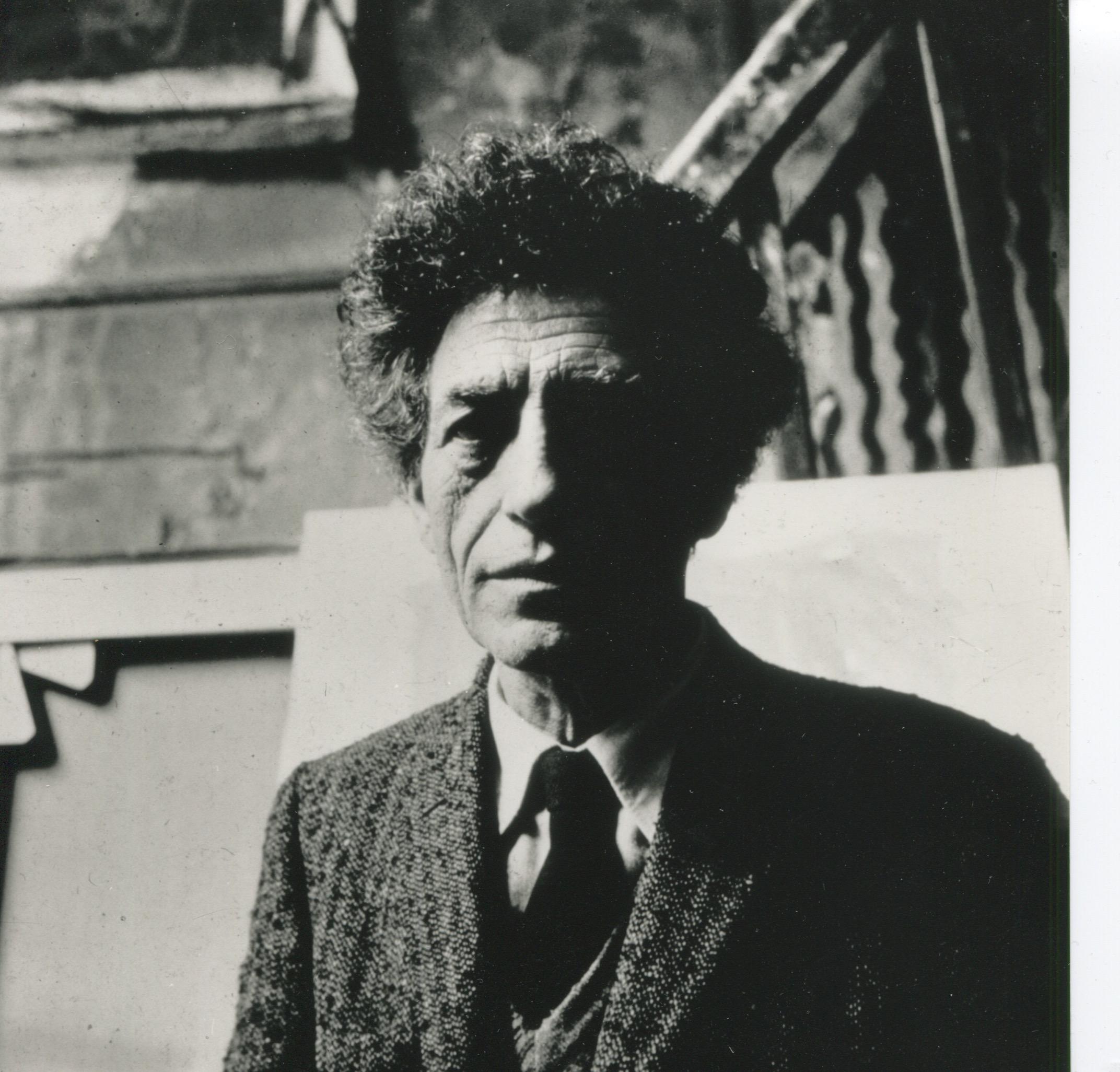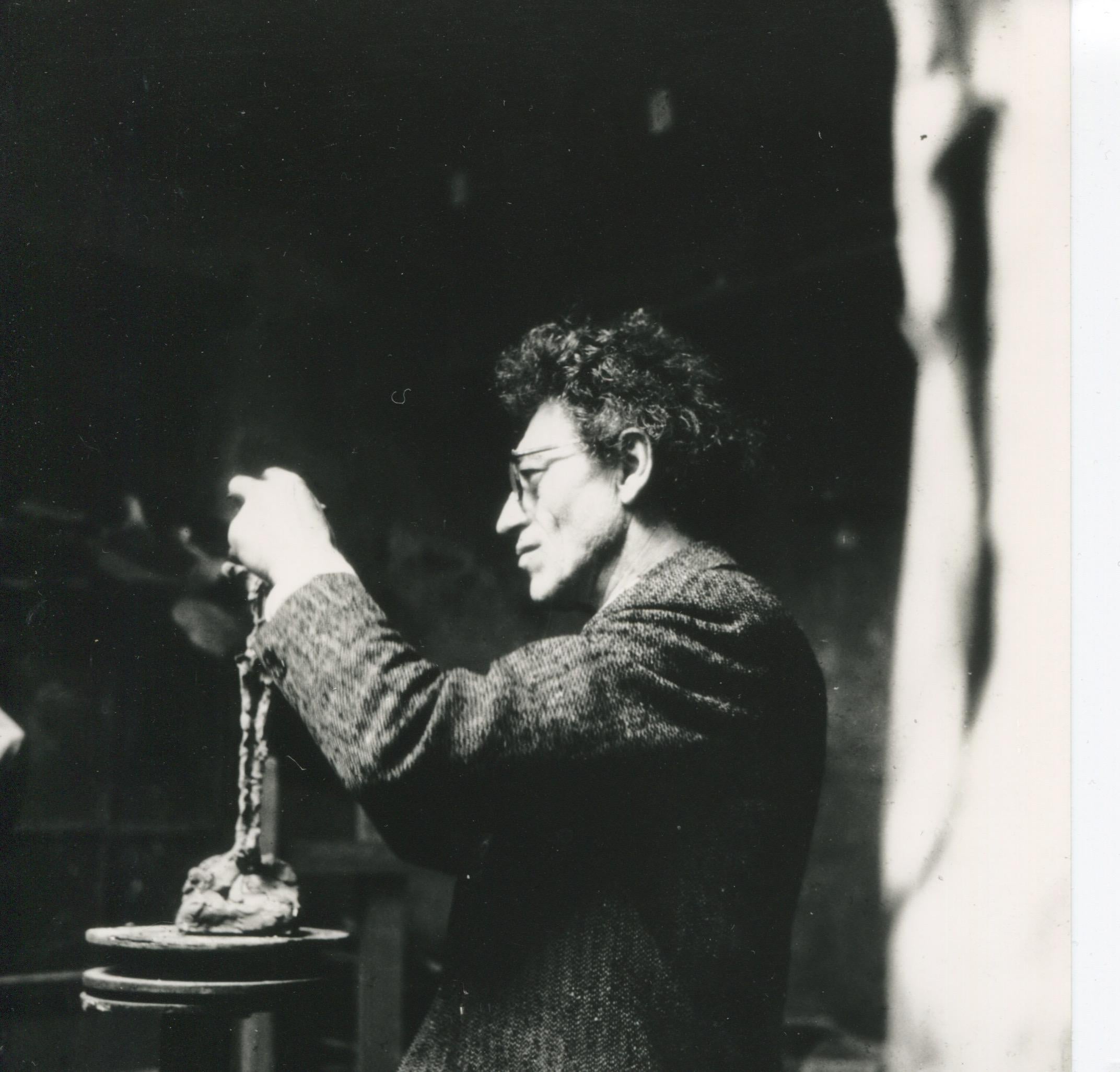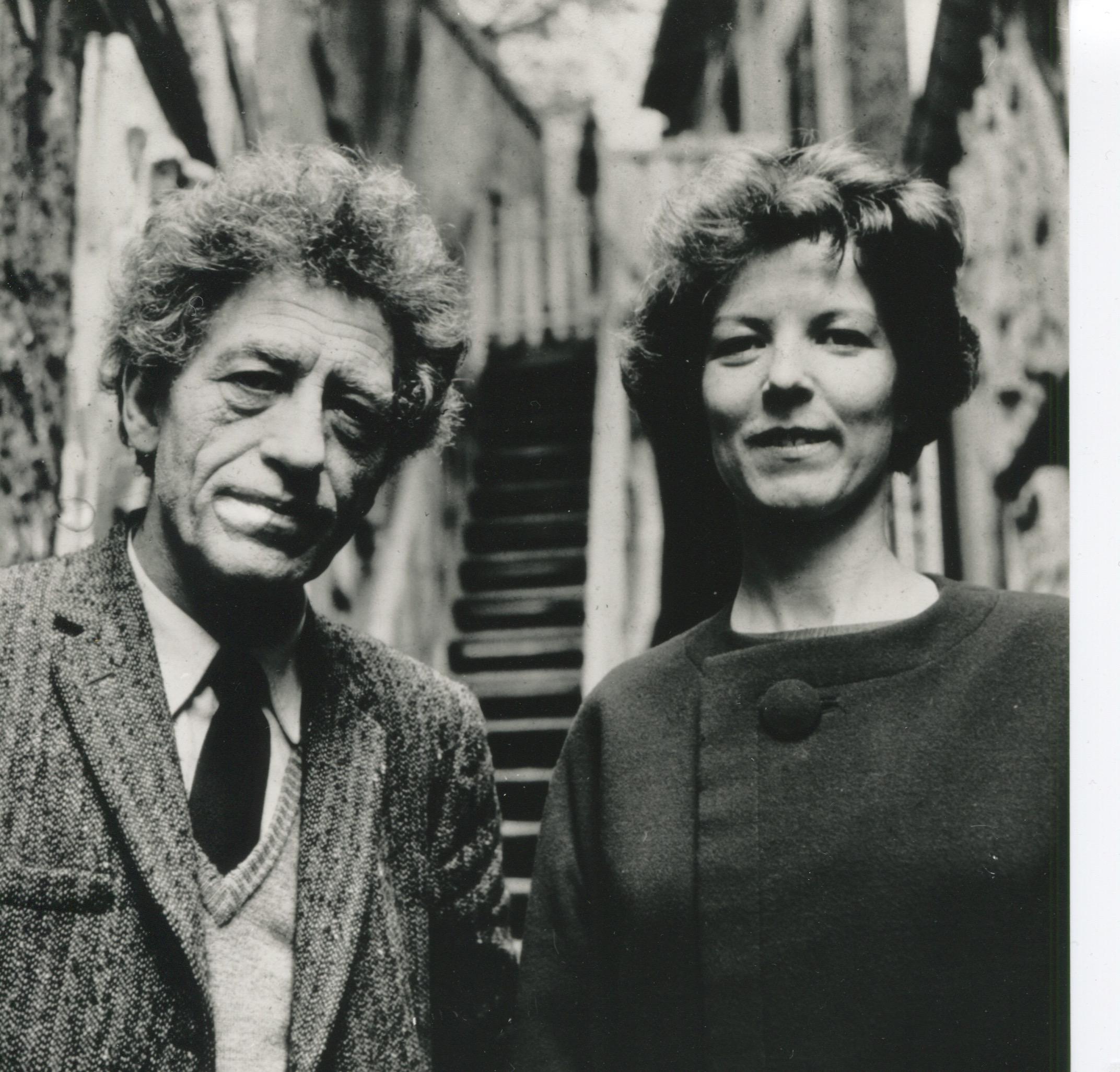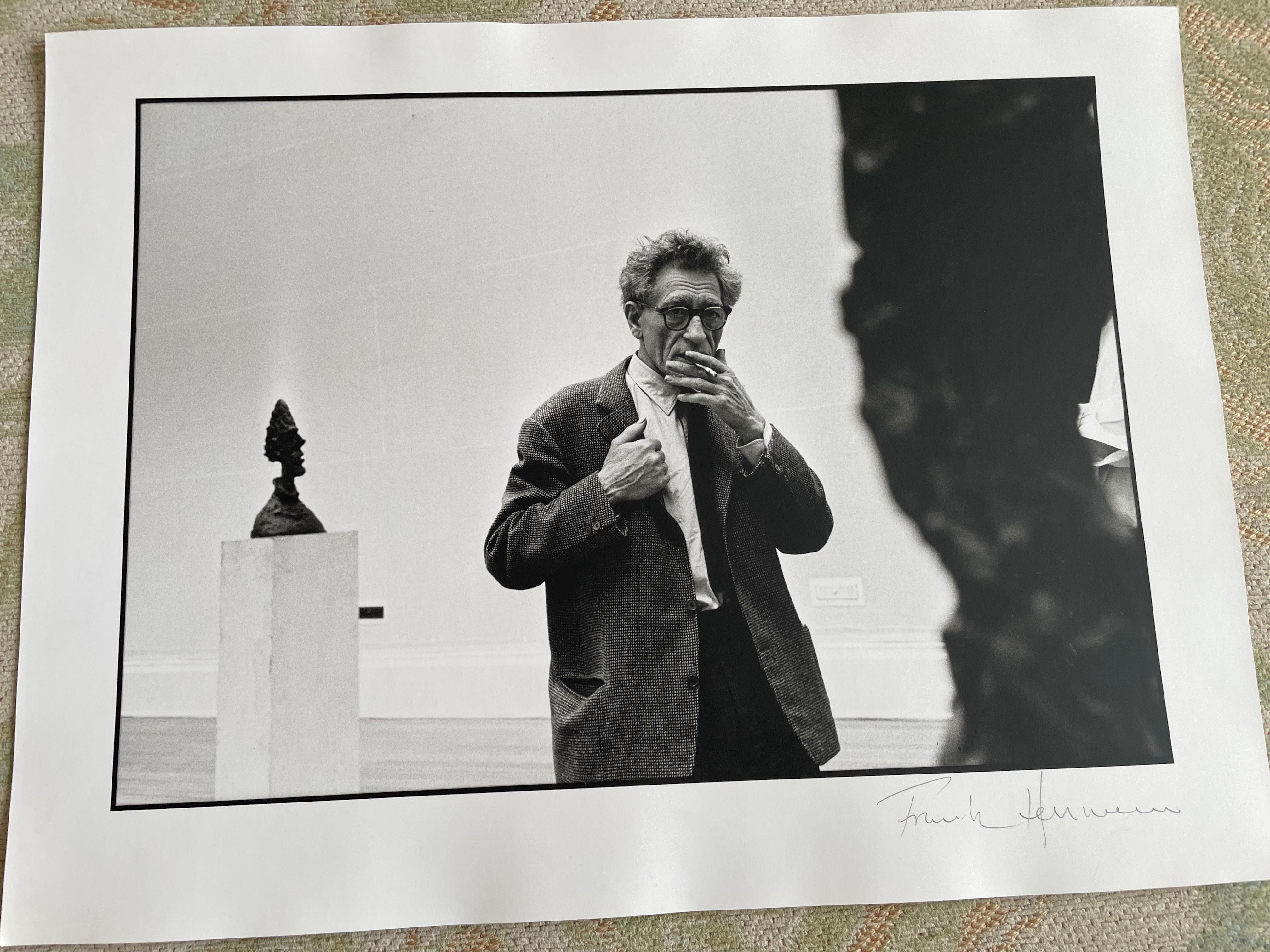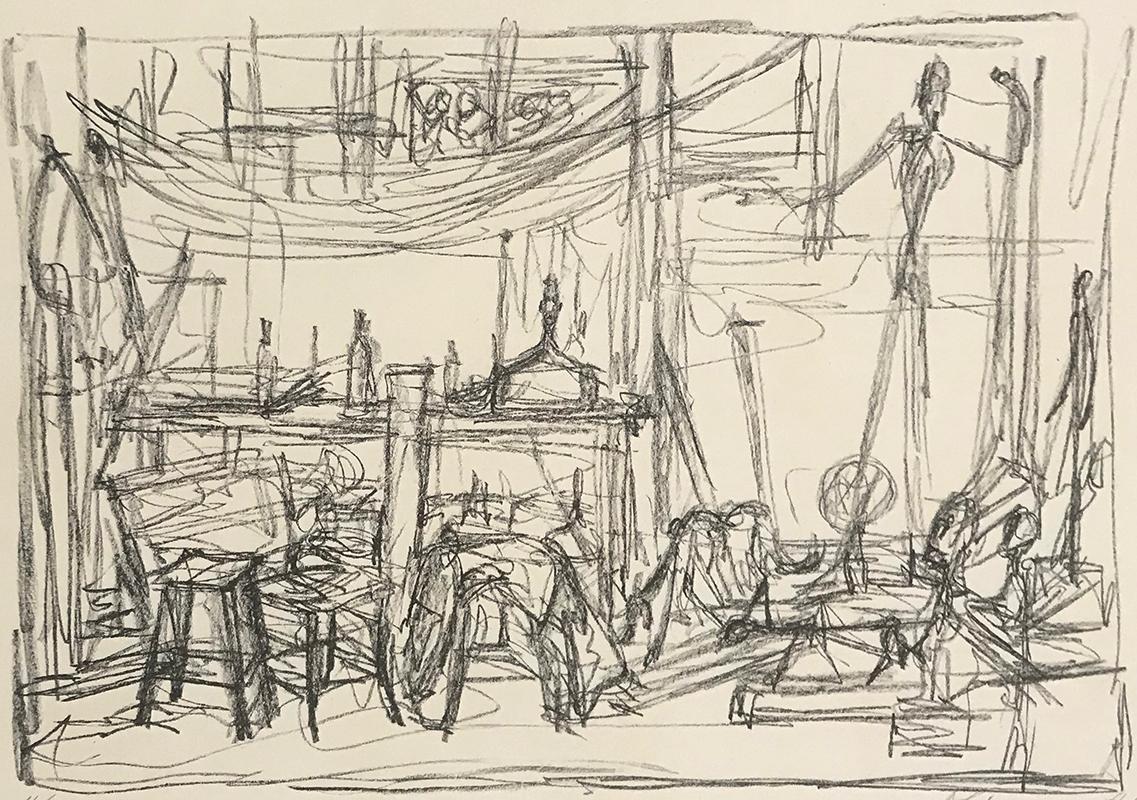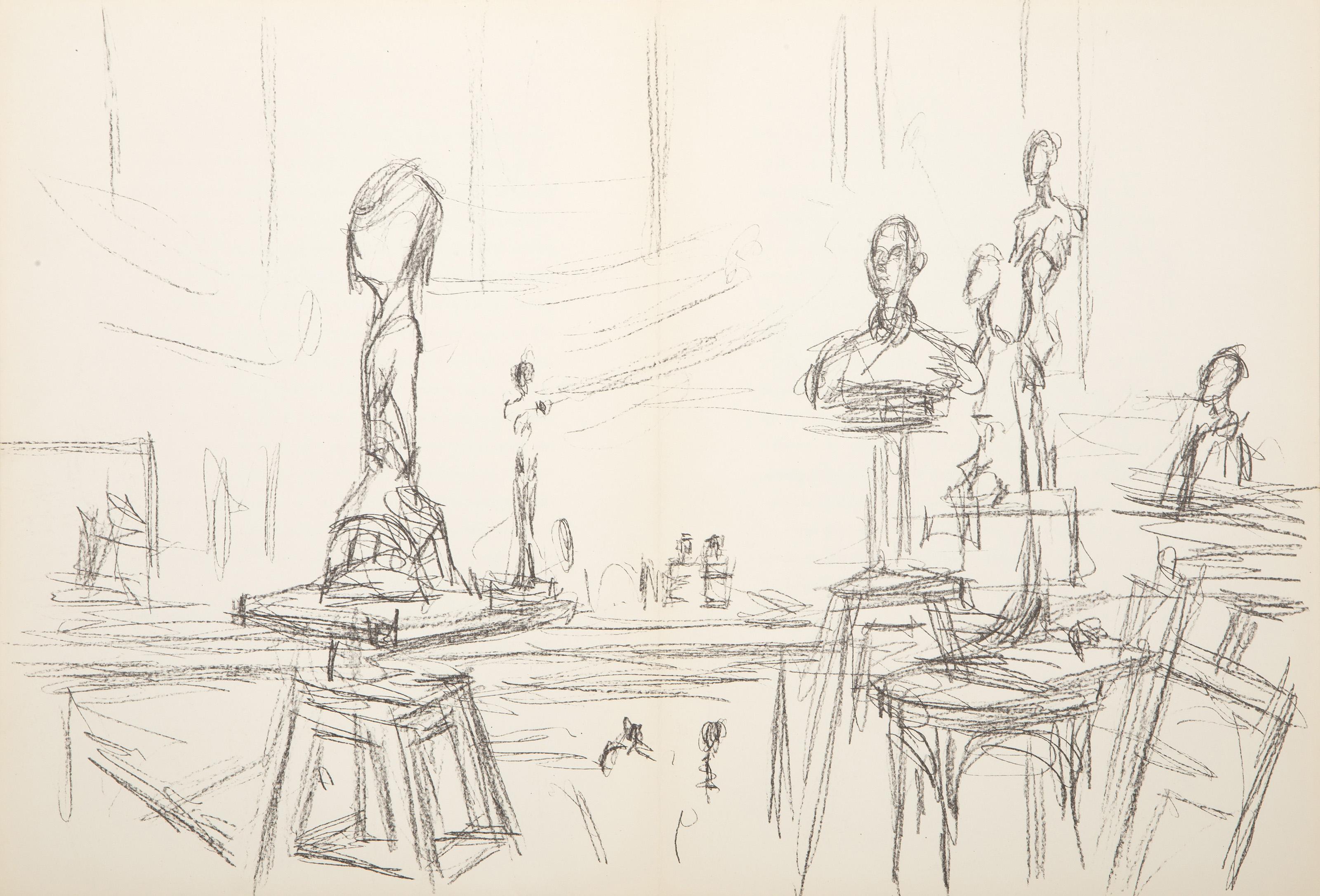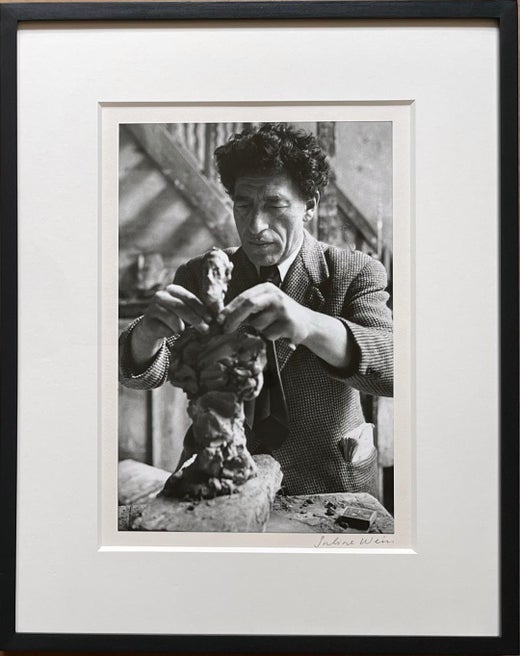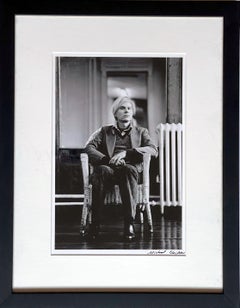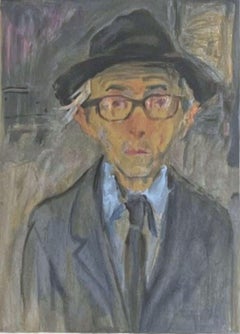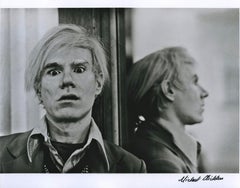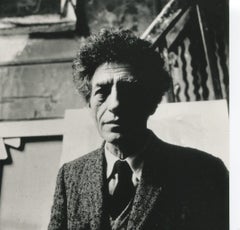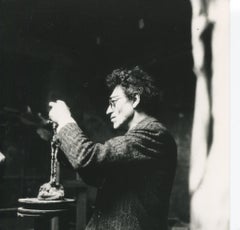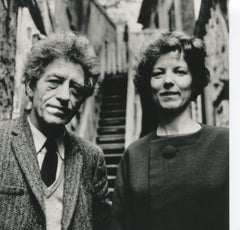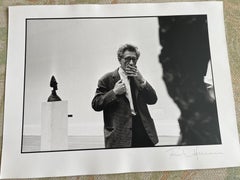Sabine WeissAlberto Giacometti dans son Atelier, 1954 (Giacometti in his studio)ca. 1970
ca. 1970
About the Item
- Creator:Sabine Weiss (1924, Swiss)
- Creation Year:ca. 1970
- Dimensions:Height: 18 in (45.72 cm)Width: 14.5 in (36.83 cm)Depth: 1.25 in (3.18 cm)
- Medium:
- Movement & Style:
- Period:
- Condition:
- Gallery Location:New York, NY
- Reference Number:1stDibs: LU1745212716382
Sabine Weiss
Sabine Weiss was born in Switzerland in 1924. In 1942, she wondered what to do with her life, and decided that she should become a photographer because it is what she loves. Weiss's mother showed her art galleries and Roman churches at a very young age, and her researcher-chemist father loved to see her print her little photos with the resources available at the time.
From 1942 until 1945, Weiss was an apprentice at Boissonnas in Geneva, house of a dynasty of photographers. In 1945, she moved to a studio in Geneva, but in 1946 Weiss decided to leave her childhood city to live in Paris. She knew there was no turning back. Weiss asked German photographer Willy Maywald to become her assistant. In 1949, Weiss met the painter Hugh Weiss and realized right away that she would spend her life with him. Weiss left Maywald and she mastered her craft and started a long career, experimenting with fashion, photojournalism, advertising and everything else.
During her free time, Weiss liked to immortalize the depths of man in all simplicity. Her photographs moved Edward Steichen when he was preparing his major exhibition "The Family of Man," and he decided to present three of her images.
In recent years, Sabine Weiss has dedicated her time to exhibitions that showcase the humanist side of her work because it means a lot to her.
(Biography provided by Peter Fetterman Gallery)
- ShippingRetrieving quote...Shipping from: New York, NY
- Return Policy
More From This Seller
View AllEarly 2000s Realist Black and White Photography
Photographic Paper
1980s Realist Portrait Prints
Lithograph
1970s Pop Art Portrait Photography
Photographic Paper
2010s Minimalist Abstract Prints
Pencil, Lithograph, Offset
1980s Pop Art Color Photography
Photographic Paper
1970s Realist Figurative Prints
Lithograph, Offset
You May Also Like
1960s Modern Portrait Photography
Black and White
1960s Modern Portrait Photography
Black and White
1960s Modern Portrait Photography
Black and White
20th Century Contemporary Portrait Photography
Archival Paper, Archival Pigment
1950s Interior Prints
Lithograph
1960s Expressionist Portrait Prints
Lithograph
